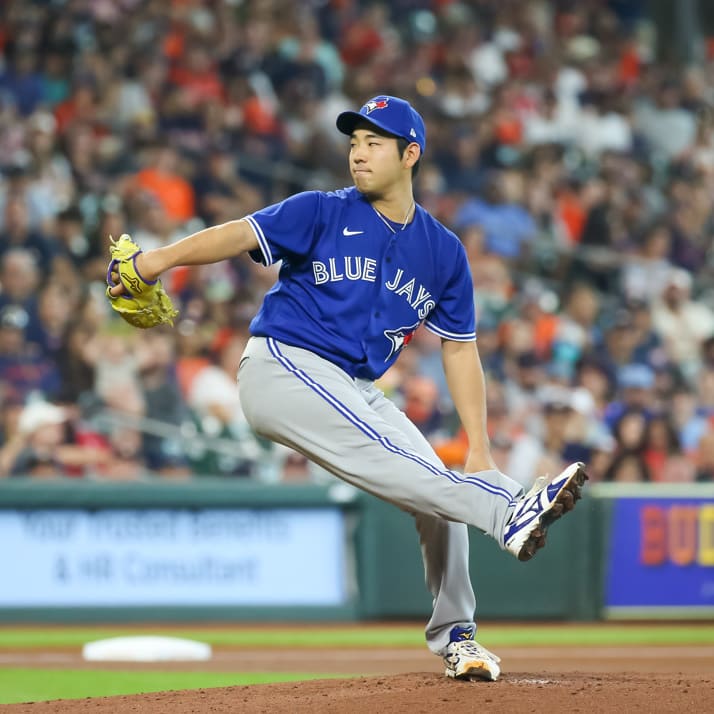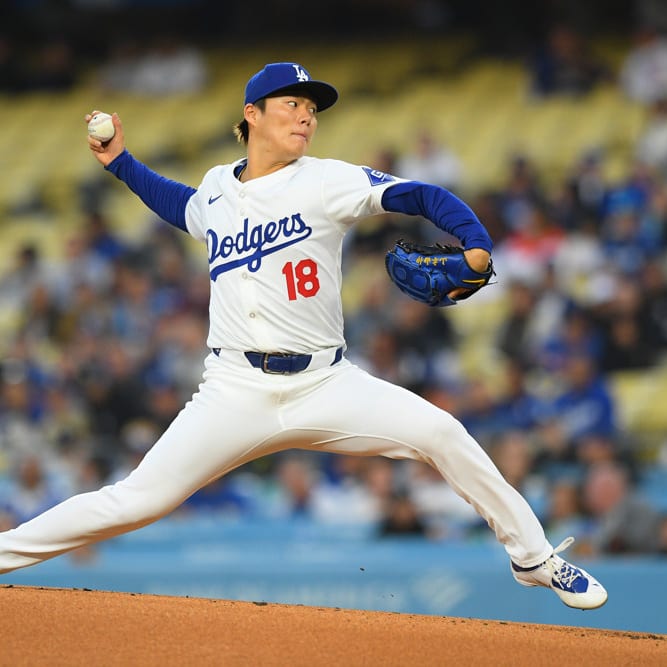This article is part of our The Z Files series.
This is a great time to be into the number-crunching aspect of fantasy baseball as we're on the verge of unearthing a whole new set of tools buoyed by the Statcast data. There's a very good chance our ability to make conclusions based on small sample sizes will be improved. This will be most applicable to DFS but will also transcend into seasonal fantasy analysis as well.
But we're not there yet so we need to continue to rely upon the present array of metrics. One that has come into vogue and is now a staple of the DFS community is weighted on base average, commonly nicknamed wOBA.
With the admission that I routinely employ wOBA in my own analysis, it isn't the be-all, end-all metric some seem to perceive. It's useful, but it has shortcomings.
Metrics like wOBA often go through a version of the old telephone game, where a phrase or sentence is whispered into someone's ear, that person whispers it to someone and so on until the last person in the chain says aloud the message. Inevitably it's remarkably different than the initial whisper, often comically so.
Quite frankly, some are misusing wOBA, incorrectly applying it and drawing erroneous conclusions. The reason is likely due to not really understanding what it is and what it can do. To that end, here are five things you need to know about wOBA.
What Is wOBA?
Contrary to popular belief, wOBA isn't a newfangled metric. It's the brainchild of Tom
This is a great time to be into the number-crunching aspect of fantasy baseball as we're on the verge of unearthing a whole new set of tools buoyed by the Statcast data. There's a very good chance our ability to make conclusions based on small sample sizes will be improved. This will be most applicable to DFS but will also transcend into seasonal fantasy analysis as well.
But we're not there yet so we need to continue to rely upon the present array of metrics. One that has come into vogue and is now a staple of the DFS community is weighted on base average, commonly nicknamed wOBA.
With the admission that I routinely employ wOBA in my own analysis, it isn't the be-all, end-all metric some seem to perceive. It's useful, but it has shortcomings.
Metrics like wOBA often go through a version of the old telephone game, where a phrase or sentence is whispered into someone's ear, that person whispers it to someone and so on until the last person in the chain says aloud the message. Inevitably it's remarkably different than the initial whisper, often comically so.
Quite frankly, some are misusing wOBA, incorrectly applying it and drawing erroneous conclusions. The reason is likely due to not really understanding what it is and what it can do. To that end, here are five things you need to know about wOBA.
What Is wOBA?
Contrary to popular belief, wOBA isn't a newfangled metric. It's the brainchild of Tom M. Tango, procurer of the Marcel projection system. Tango, along with fellow authors Mitchel G. Lichtman and Andrew E. Dolphin, referenced wOBA frequently in their 2007 publication, The Book: Playing the Percentages in Baseball. The following year, Fangraphs begin including wOBA with their accessible stats.
In short, wOBA is a better proxy for expected run production than other metrics, most notably OPS. It's basically a souped-up version of standard on base percentage (OBP), applying a coefficient to each of the components. This coefficient is derived from the expected run matrix for each season and weights the different aspects relative to how they influence scoring. Because wOBA directly incorporates most of the statistics contributing to DFS scoring and implies runs and RBI, it has a strong correlation to DFS points.
Location, Location, Location
Something to realize is wOBA is not park adjusted. Of course batting average, OBP, slugging percentage, etc. aren't either, but they also aren't leading indicators for DFS analysis. By means of example, a .350 wOBA from a San Francisco Giants hitter is more impressive than the same mark from a Colorado Rockies hitter. If wOBA is incorporated in some sort of algorithm, it's straightforward to make the appropriate correction so it's still useful, just keep in mind that when you hear a series of player's wOBA being cited, they're not all equal.
If you want to use the principles of wOBA in a park-corrected manner, check out wRC+ on Fangraphs. As opposed to wOBA which is a rate stat, wRC+ is an index where 100 is league average. In a nutshell, wRC+ is park-corrected wOBA expressed as an index.
wOBA and BABIP
Citing a lucky or unlucky batting average on balls in play (BABIP) is now conventional analysis. Have you ever heard someone referencing a lucky or unlucky wOBA? Yeah, me neither. But we should. The same lucky or unlucky hits intrinsic to BABIP impact wOBA as well. The influence may not be as stringent but it's relevant and needs to be accounted for in analysis.
Almost, But Not Quite
It was mentioned above that wOBA is a good approximation for DFS points potential. However there are a couple of shortcomings. A player that steals bases is shortchanged by wOBA as there's no credit for swipes in the formula. Hence, using wOBA as a stand-alone metric to gauge the DFS points of someone like Jonathan Villar renders an inaccurate measure of his potential. The other issue is wOBA is a rate stat that doesn't consider team context. A hitter with a .350 wOBA hitting third has a greater potential for run production than a .350 hitter in the same lineup hitting seventh. Similarly, a player with a .350 wOBA hitting third in a high-scoring lineup portends to better run production than the same mark in a weaker lineup. Again, this does not invalidate the utility of wOBA, just emphasizes the need to really understand where it comes from and what it means.
wOBA and Sample Size
To this point, the focus has been on a hitter's wOBA. The metric is also very useful in a team manner when evaluating a pitcher's matchup. That is, we often measure the quality of opponent by their team wOBA. A pitcher should perform better facing a team sporting a .300 wOBA as opposed to a .330 wOBA. That said, there are a plethora of pitfalls inherent to this analysis.
Teams exhibit different, often decidedly so, wOBA versus left-handed and right-handed pitchers. OK, no problem, let's just look at the specific platoon splits. The problem here is the more data is parsed, the larger the error bars, especially early in the season. Further, since wOBA isn't park adjusted, it's best to not only dissect it into handedness, but also home versus away. Since a team faces righties far more than lefties the sample versus southpaws, both home and away, is significantly smaller.
The other consideration is how recent the wOBA for a team needs to be to be considered predictive. This, my friends, is a huge issue, one I teased and started to tackle earlier in the season only to discover it requires more than a couple hours' worth of number-crunching. It's an off-season project.
The DFS community is divided how to deal with a player's streak, be it hot or cold. What about a team? Can teams collectively slump or get hot? What is the proper wOBA to look at when judging the quality of a pitcher's opponent, a week? Three weeks? Again, the smaller the sample, the greater the error bar.
Unfortunately, I don't have the answer which means I'm guilty of doing exactly what I railed against earlier, misusing and misapplying data. But right now, it's all we have. Plus, no matter how accurate the data is, there's a ton of variance in a one-game sample.
So I'll continue to incorporate wOBA into my writing and analysis, not to mention my own DFS lineup construction. I will, however, continue to refine the limits of how wOBA can be applied, especially in terms of sample size and stabilization. As implied in the intro, my gut senses the next major breakthrough in this style of analysis will utilize Statcast data (exit velocity, launch angle, etc.) to reduce the sample needed to draw actionable conclusions. That is, down the road, instead of citing a team's home wOBA versus left-handers, we'll be referring to the team's aggregate hard hit data over a time frame significant enough that it can be considered a skill and not just a collective hot streak.
I think Harold Reynolds' head just exploded.










